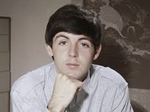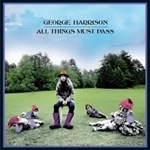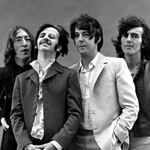- Register
- Log in to Tune-In
- Wishlist (0)
-
Shopping cart
(0)
You have no items in your shopping cart.
Beatles News

A band as culturally influential as The Beatles was bound to attract its share of wild theories, urban legends, and even bizarre-but-true stories. Formed in Liverpool in 1960 and made up of John Lennon, Paul McCartney, George Harrison, and Ringo Starr, The Beatles are often regarded as the most eminent band of all time.
Their music evolved dramatically over the decade following their formation – from catchy pop hits like I Want to Hold Your Hand to groundbreaking albums such as Sgt. Pepper’s Lonely Hearts Club Band and The White Album – and their cultural position changed along with their sound.
As psychedelia, mysticism, and countercultural movements swept the UK and US, The Beatles’ reputation became somewhat edgier and more shrouded in intrigue. As a result, rumours swirled around the band, some of which have persisted and become part of legend.
Here are five of the craziest theories – and an honest estimation of whether there’s any truth to them.
The original drummer in The Beatles was fired for being better-looking than Paul McCartney. It’s long been believed that Pete was cut from the band for being ‘too good looking’.&
details

We should be prepared for a journey through time and space when viewing the documentary "One to One: John and Yoko: A Year of Love & Transformation." Superbly directed by Oscar winning filmmaker Kevin MacDonald, along with Sam R. Williams, this extraordinary documentary places us back in 1972.
John and Yoko settled in a small apartment in the West Village, where an extraordinary array of musicians/artists, following in the paths of Bob Dylan, Joan Baez, and others in West Village bistros. If you haven't already done so, see "A Complete Unknown. In fact, you might find it even more engaging if you check it out again.)
This era enhanced our entry into a period of history wherein the "forces" for peace were in the process of dislodging the powers that wanted to continue making war.Hence, the amplification (throughout society) of Lennon's song, "All we are saying is give Peace a Chance."
"One to One" is focused on a benefit concert that John and Yoko organized for special youngsters at Willow Brook, in nearby upstate New York. The exceptional audio mastering/editing was done by their son, Sean Ono Lennon.
Iconic figures of the time, such as Beat poet Allen Ginsberg (author of "Howl") and Yippee c details

Sir Paul McCartney "insulted" John Lennon with one request.
John Lennon reportedly felt "insulted" by a suggestion from bandmate Sir Paul McCartney during the creation of one of The Beatles' greatest tracks. Paul is understood to have written the first verse of the incredibly popular Eleanor Rigby before putting the song on the back burner.
However, at a dinner party hosted by John and his ex-wife Cynthia, Paul is said to have played his version of the song for friends, asking for suggestions how to finish it. According to the book John and Paul: A Love Story in Songs, businessman Pete Shotton, a friend of John, suggested that the Eleanor character could die in the third verse, leaving Father Mackenzie, the priest in the lyrics, to conduct her funeral, reports the Mirror US.
Source: express.co.uk/Matt Jackson
details
While Paul McCartney and John Lennon are best known for their iconic songs written for The Beatles, their songwriting genius extended beyond their own band.
In the early part of the 1960s, The Beatles' manager Brian Epstein used John and Paul's talents to boost the careers of other artists under his management. This involved commissioning new songs from the duo or repurposing existing ones for artists like Cilla Black and Billy J. Kramer with his band The Dakotas. Interestingly, John and Paul were also behind The Rolling Stones first hit I Wanna Be Your Man, and they generously gave away A World Without Love to Peter and Gordon.
Peter and Gordon reaped significant benefits from John and Paul's work.
Paul had written A World Without Love at just 16 years old. When he moved in with then-girlfriend Jane Asher in 1963, her brother Peter Asher (of Peter and Gordon) heard the song and requested it.
Source: the-express.com/Dan Haygarth, Scarlett
details
A Beatles fan who bought 84 envelopes which once contained fan mail sent to Ringo Starr is attempting to contact the letters' original authors.
Joseph O'Donnell, from Tynemouth, bought the envelopes dated between 1965 and 1966 in an online auction in January.
They had been collected by Starr's former employee who had kept them for the international stamps, he said. Mr O'Donnell has written to the return addresses listed on about 50 of the envelopes, which were sent from as far away as Brazil and Australia, in the hope of finding the original fan letters as well as any potential responses from the drummer.
Mr O'Donnell, who describes himself as a "huge Beatles fan", sent letters and return envelopes to about 50 addresses last week.
"The chances are if there are 50 of these return addresses, I'm going to get at least one letter back," he said.
Joseph O'Donnell Back of an envelope with lots of Beatles-related scribbles such as "Beatles are Immortal" and "Beatles 4-Ever" and "Ringo". There is a Hallmark logo in the middle. Joseph O'Donnell
A number of the envelopes included return addresses, said Mr O'Donnell. Mr O'Donnell only has the envelopes and not the original fan le details

When The Beatles parted ways in 1970, it was a sad ending, but also the start of four wildly different, wildly brilliant solo journeys. From protest anthems to dreamy ballads and synth-driven adventures, each Beatle proved they still had something to say. These ten albums—one from each member and a few standouts—show how their post-Beatles careers weren’t just footnotes, but essential chapters in rock history.
George Harrison – All Things Must Pass
The quiet Beatle came out swinging with a triple album full of soul, spirituality, and slide guitar. “My Sweet Lord” was the hit, but the deep cuts—“Wah-Wah,” “Isn’t It a Pity,” “Beware of Darkness”—are where George’s songwriting soars. It was the first solo album to truly eclipse the shadow of The Beatles. Phil Spector’s Wall of Sound production made it massive, but it’s George’s vision that made it timeless.
John Lennon – Plastic Ono Band
Raw, brutal, and unfiltered, this was John with no safety net. Inspired by primal scream therapy, the album strips away the myth and leaves the man. “Mother,” “Working Class Hero,&rdquo
details

The Beatles weren't just a rock and roll sensation but a cultural phenomenon. Their rapid ascent began in 1963, captivating audiences across the UK and Europe.
Come February 1964, they blazed through the United States, dominating the airwaves with the smash hit I Want To Hold Your Hand and capturing over 73 million viewers on The Ed Sullivan Show. Their stellar rise from Liverpool's Cavern Club saw them become global superstars in mere years, with the frenzy of Beatlemania quickly becoming a profitable venture.
It didn't take long for the Fab Four to venture into cinema. Just one month after their American breakthrough, they commenced production on A Hard Day's Night, their first movie. It comes after Paul McCartney revealed he was 'blown away' by one Beatles cover.
A Hard Day's Night director Richard Lester helmed the quartet—Paul, George Harrison, Ringo Starr, and John Lennon—who played whimsical versions of themselves in this comedic flick, which followed two zany days leading up to a TV show appearance.
The Beatles pose for a portrait on the roof of the Palace Court Hotel in Bournemouth in August 1963.
Source: themirror.com/Dan Haygarth

Although they reshaped music as we know it, the Beatles never shied away from their influences. Their earliest albums included covers of songs by some of their favorite American artists, including Buddy Holly, Little Richard, Carl Perkins and groups from the Motown stable.
Those influences were rooted deep in their music sensibilities. George Harrison’s eye-catching Futurama guitar was bought so he could mimic his hero Holly at a time when Fender Stratocasters hadn’t yet made it to the U.K. Paul McCartney often doffed his hat to his forebearers, whether by channeling Little Richard's singing style or drawing Motown stylings into “Got to Get You into My Life.”
But perhaps the most obvious tribute to a fellow group was "Back in the U.S.S.R.," a McCartney composition from the 1968 White Album that was recorded with all the trimmings of a classic Beach Boys tune. And indeed, the Beatles were Beach Boys fans. John Lennon and McCartney were both heavily influenced by Brian Wilson's songs, arrangements and recordings on Pet Sounds, and they considered the group's multilayered harmonies as good as their own.
So how did "Back in the U.S.S.R." become a Beach Boys tribute? It got some help f details

Freed of the pressure of leading a band, Paul McCartney decided to let his experimental flag fly in his 1980 album McCartney II. That relaxed spirit made its way into the lyrics, which occasionally revel in their silliness.
But for the least song on the album, McCartney went back to more traditional songwriting strengths: a pretty tune and heartfelt lyrics. “One Of These Days”, a prime deep cut from his catalog, emerged from that process.
Paul McCartney started to grow weary of fronting a band as the 70s ended. After all, they had been fulfilling that role for the better part of two decades. Barely a year had elapsed after The Beatles announced their break when McCartney started up Wings, who carried him through the majority of the 70s.
In 1980, Paul McCartney took the opportunity to record a DIY solo album. He played all the instruments on McCartney II, including synthesizers, which provided the dominant sound of the record. Aside from the ear-candy single “Coming Up”, much of the album was given over to offbeat tracks like “Temporary Secretary” and “Bogey Music”.
McCartney did go a more familiar route for the closing track. As he explained in an details

One of the most controversial moments of The Beatles’ career has to be when John Lennon said in an interview that the Fab Four were “bigger than Jesus” back in 1966. It was a huge debacle that angered a lot of conservative Christian Americans. It led to a pretty unpleasant North American tour for the band that year. Despite Lennon’s attempt to clarify his comments, the damage had already been done. Some concerts were full-on unsafe for The Beatles because of that statement being massively blown out of proportion. Just as well, the controversy was likely a contributing factor to the band calling it quits on touring later that year.
Decades later in 2010, the Catholic Church officially published an article in its newspaper, the L’Osservatore Romano, written by Giuseppe Fiorentino and Gaetano Vallini. In the article, the Vatican declared that it had officially forgiven John Lennon for his remarks comparing The Beatles to Jesus.
Some saw the article as an agreeable farewell to the whole debacle that never really disappeared from the Fab Four’s legacy. However, Ringo Starr was not happy about the Catholic Church’s “forgiveness” of his late friend and bandmate.
details

Although they reshaped music as we know it, the Beatles never shied away from their influences. Their earliest albums included covers of songs by some of their favorite American artists, including Buddy Holly, Little Richard, Carl Perkins and groups from the Motown stable.
Those influences were rooted deep in their music sensibilities. George Harrison’s eye-catching Futurama guitar was bought so he could mimic his hero Holly at a time when Fender Stratocasters hadn’t yet made it to the U.K. Paul McCartney often doffed his hat to his forebearers, whether by channeling Little Richard's singing style or drawing Motown stylings into “Got to Get You into My Life.”
But perhaps the most obvious tribute to a fellow group was "Back in the U.S.S.R.," a McCartney composition from the 1968 White Album that was recorded with all the trimmings of a classic Beach Boys tune. And indeed, the Beatles were Beach Boys fans. John Lennon and McCartney were both heavily influenced by Brian Wilson's songs, arrangements and recordings on Pet Sounds, and they considered the group's multilayered harmonies as good as their own.
So how did "Back in the U.S.S.R." become a Beach Boys tribute? It got some help f details

While many musicians — from Queen to Johnny Cash — have gotten the biopic treatment, doing a movie about The Beatles was once believed to be a near impossibility. The life and music rights have long been considered far too expensive for any filmmaker to attempt a Beatles biography onscreen. But in 2028 the Beatles are getting not one but four feature films planned via Sony Pictures.
Sam Mendes (Skyfall, 1917) is directing the movies, each one focused on a different band member, that will star Paul Mescal as Paul McCartney, Harris Dickinson as John Lennon, Joseph Quinn as George Harrison, and Barry Keoghan as Ringo Starr. Said Mendes of the ambitious project at Sony’s 2025 CinemaCon presentation, “We need big cinematic events to get people out of the house.”
Here is what we know so far about the Beatles movies. When Will the ‘Beatles’ Movies Be Released?
All four Beatles films are set for theatrical release in April 2028. “You have to match the boldness of the idea with a bold release strategy,” Sony Pictures CEO Tom Rothman told The Hollywood Reporter in 2024 about the films. “There hasn’t been an enterprise like this before, and you details

Opening this week is “One to One: John & Yoko,” a film about the only full concert that John Lennon gave once he left the Beatles. Directed by Kevin Macdonald (Sam Rice-Edwards receives a co-director credit), it features restored footage of that August 30, 1972, concert in New York City, as well as a meticulous recreation of the West Village apartment Lennon and Yoko Ono shared when they moved to Manhattan in 1971.
Please don’t be offended by my opening question. I think it’s refreshing that there’s fare for those outside movie theaters’ most desired market of 12-34 year olds. I’m sure there are discerning people in that age bracket who would enjoy the aforementioned movies, just as I’m sure there are older folks who enjoyed “A Minecraft Movie.”
But let’s be real here. To fully enjoy these movies, I think you had to be there when their events occurred. Watching the footage, I got the sense I was missing out big time because I lacked the nostalgia factor.
So, the rest of this review has been rated NC-55. If you’re under 55, please leave now. Don’t worry, I’m coming with you, because I am not old enough to read my own r details

In the early months of 1966, whenever Paul McCartney sat down at a piano, wherever it was, he would start tinkering with a song he called “Miss Daisy Hawkins.” From the moment he found its first five syllabic notes, the song seems to have found its themes: loneliness, futility, the end of life. McCartney was twenty-three. Without discussing it, both John Lennon and Paul came back from their break with songs about death, written from a detached, omniscient perspective.
In “Tomorrow Never Knows” John dispenses instruction from the mountaintop. In two minutes, “Eleanor Rigby” captures the entire lives of two individuals in a series of stark images. Musically, both songs are stripped down to a few parts in order to distill and intensify some essence. “Eleanor Rigby” confines itself to a narrow melodic range and the song has minimal harmonic development: like “Tomorrow Never Knows,” it alternates between just two chords.
Set in a minor key, its tightly wound, almost claustrophobic verse plays out over an accompaniment—a string section arranged by George Martin—that sticks close to the tonic, except when the cellos burst into a galloping run up th details

George Harrison never wanted to work with one Beatle again but said it 'wasn't personal'
The Beatles officially broke up in 1970 after Paul McCartney announced he was leaving the band and it seems tensions remained between him and George Harrison
When Paul McCartney announced his decision to quit The Beatles, it caused a lot of tension with his former bandmates.
The singer-songwriter, now 82, stepped away from The Beatles in 1970 and the group disbanded, with John Lennon, George Harrison and Ringo Starr turning their backs on Paul. John aired his frustration at his former friend in songs such as How Do You Sleep?.
Ringo also took aim at Paul with the track Back Off Boogaloo in which he called him a "meathead." As for George, he largely kept his opinions out of the spotlight until a press conference for his 1974 solo tour.
George had fueled rumors of a Beatles reunion when he covered a number of Beatles song in his set. In response, he was asked about the band during the press conference.
Source: themirror.com/Scarlett O'Toole
details